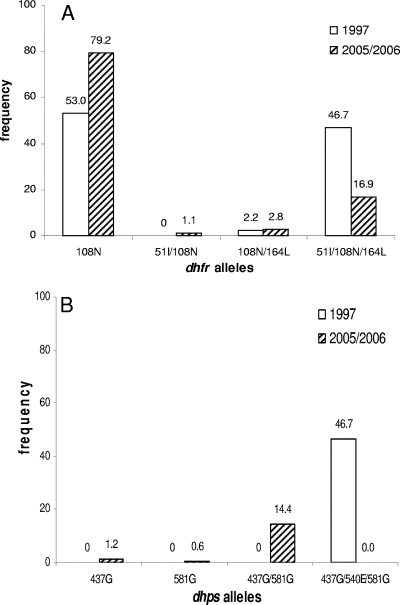FIG. 1.
Frequency of dhfr (A) and dhps (B) mutant alleles at two time points from the Iquitos region of Peru. The data for 2005 and 2006 came from this study; the data for 1997 were taken from the work of Kublin et al. (4). The difference in the frequencies of the dhfr and dhps alleles with triple mutations between the two points was highly significant (P < 0.0001), based on Fisher's exact test. The numbers of isolates were 141, 2, 5, and 30 for mutant dhfr alleles 108, 51/108, 108/164, and 51/108/164, respectively (a total of 178 samples were genotyped for dhfr). The numbers of isolates were 2, 1, 24, and 0 for mutant dhps alleles 437, 581, 437/581, and 437/540/581, respectively. The wild-type allele was present in 140 samples (a total of 167 samples were genotyped for dhps). One of the S108N/I164L allele isolates and all of the N51I/S108N/I164L allele isolates carried the Bolivia repeat.

